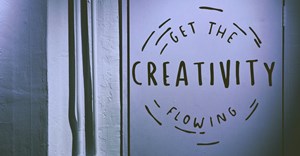
Subscribe & Follow
Jobs
- Social Media Specialist Johannesburg
- Advertising Specialist - Get It Magazine Durban Durban
- Advertising Sales Executive Sandton
- Art Director Sandton
- Senior Working Art Director / Designer Johannesburg
- Senior Account Manager Cape Town, Johannesburg
- Junior Account Manager Cape Town, Johannesburg
- Copywriter Cape Town
- Ad Traffic Intern Cape Town
- Director of Creative Performance Cape Town
Getting your digital advertising right

It seems that there is a growing tide (excuse the pun – Tide is one of P&G’s detergent brands) among CMO’s demanding ethical standards in advertising, rejecting the notion that programmatic advertising is the silver bullet to resolve marketing complexity. In fact, ‘programmatic was at least partly to blame because brands bought ads that were placed randomly across the web, often with little concern for context,’ according to an August 2017 piece on Huffington Post.
What marketers are looking for is more control over ad placement. Nobody wants their brand to be on a pre-roll of a soft porn video or one that provides tips on how to make a bomb at home. While those are extreme examples, why take the risk of placing your ad adjacent to a message that is contrary to your brand’s and company’s values? Control over ad placement means that you engage with media owners (offline and online) with similar values whose context you know and whose content and brand you can trust. The much-heralded democratisation of voice brought about by global platforms has had unintended consequences. The explosion of fake news masquerading as fact, the scourge of ad fraud and the insertion of middlemen in the ad tech ecosystem has all posed challenges for marketers.
Ad fraud
The World Federation of Advertisers predicts that ad fraud will cost advertisers $50bn by 2025, describing the malpractice as an organised crime ‘second only to the drugs trade’. In December 2016, ad fraud detection company, ‘White Ops’ exposed Methbot, an ad fraud scam that allegedly cost advertisers up to $5m a day.
Brian Brown the chief business officer at Brave and Luke Mulks the senior ad tech specialist at the same company wrote in their April blog that you may think that ad fraud is limited to a small group of bad actors and victims. Recent incidents demonstrate that some of the largest players in the space are not immune:
In March 2017, JP Morgan Chase, the finance and banking group, scaled back their ad delivery from 400,000 sites to a whitelist of 5,000 sites, and surprisingly saw little to no change in the cost of ad impressions or visibility.
The ‘whitelist’
This idea of a ‘whitelist’ is worth looking into. ‘Whitelist’ is defined as a list of people or things (in the above instance it refers to media owners/publishers) considered to be acceptable or trustworthy. If your ‘whitelist’ is made up of trusted South African publishers, what do you lose?
Your first response is probably efficiency and scale. That’s probably correct. But be aware of the hyper-inflated metrics that you are often served up by platforms and the fact that $4.2bn in ad investment was lost to non-human traffic in 2016, according to the Interactive Advertising Bureau’s own research.
In fact, in September 2016, The Wall Street Journal reported that Facebook had been overstating video ad metrics by an estimated 60-80% for two years resulting in a class action lawsuit.
How about asking, “What do I gain by finding my audience through South African publishers?” Brand safety from dealing with publishers that understand local communities; that produce content that is contextually relevant; that have a strong reputation in the country and have spent decades building a relationship of trust with local communities.
Shouldn't you be investing in trusted, credible, ethical advertising and an alignment of values?


















